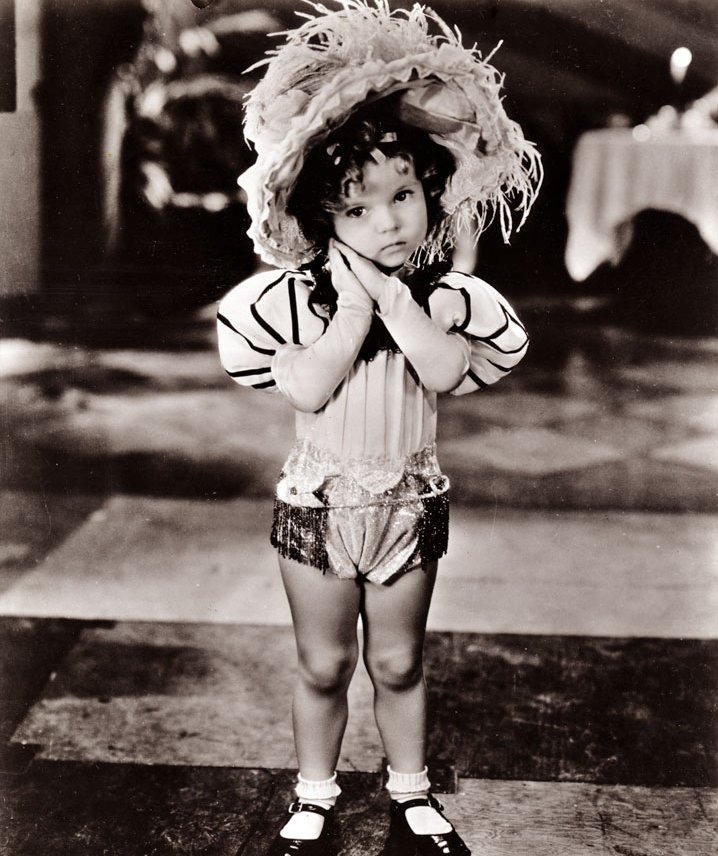Following the death of Hollywood child star Shirley Temple on February 10th this year, the media focused on her role as a girl who helped break down racial barriers and lift the spirits of a nation in the midst of the Depression, but whose childhood was simultaneously “stolen” by the industry.

When I heard the news my mind immediately cast back to reading, during my research, of how 20th Century Fox studios sued British novelist Graham Greene following his 1937 review of Temple’s film Wee Willie Winkie in the magazine Night and Day. The scandal that erupted following Greene’s comments was no light matter, as he fled to Mexico and faced possible imprisonment. To find and read the full review now is still extremely difficult. It can sometimes be found in the store of a University library, but even today remains hidden from the public eye.
The New York Times obituary for Temple made an allusion to the event and review, but in the form of a mysterious, short paragraph that suggested Greene was not “a fan.” So, what was it that Greene said which provoked such anger and indignation?
Certainly his review was extremely unfavourable and he had elsewhere made personal remarks on the child herself, purporting in a strangely snide remark that the child Temple was surely a “fifty-year old dwarf.” Yet, the culturally ambiguous and uncanny nature of a child that seems old before its time is not a new figure. It is discussed superbly in Claudia Nelson’s Precocious Children and Childish Adults, which focuses on the Victorian era, but nonetheless resonates beyond the confines of that century and gives weight to Greene’s depiction. It was, however, not even his reference to her as “that little bitch”, but Greene’s allusions to the sexual desirability of Hollywood’s child star that caused the greatest rebuke.
Although at points Greene’s review in Night and Day seems vicious, there is something that, at least to today’s readers, seems particularly astute in his observations:
Her admirers – middle-aged men and clergymen – respond to her dubious coquetry, to the sight of her well-shaped and desirable little body, packed with enormous vitality, only because the safety curtain of story and dialogue drops between their intelligence and their desire.
To a point, Greene is not referring to Temple as the real, individual child, but the child who is projected on the screen by savvy marketing teams. She is the one whom the American public has invested hope in and who symbolised all the alluring innocence of childhood. Hers is a childhood constructed out of our nostalgic desires: “Adult emotions of love and grief glissade across the mask of childhood, a childhood skin-deep.”
Perhaps, unwittingly (though whether Greene thought so is unclear) Temple’s perfect formation continually leans towards the coquette. As depicted by the photograph above, this might be visually constructed to enhance those big, seductive eyes in womanly clothes, but with an endearing vulnerability of childhood. In another example, the Guardian‘s piece ‘Shirley Temple: a career in movie clips‘, shows a clip from Early Bird in which, half way through, the child is dancing around in her underwear. She is manipulating her body in ways that make it difficult not to fear or be disturbed by what is being seen under the guise of a bubbly and innocent child star in a very public setting.
It would be overly cynical to suggest that Temple was deliberately utilised for some sort of “sex appeal”, but it is naive to maintain that this wouldn’t have been attractive to many men at the time. After all, sexual abuse or desire for children is certainly not solely a twenty-first-century pandemic.
 Jen Baker is a postgraduate research student at the University of Bristol. Her thesis Strange and Bitter Fruit: The Monstrous Child in Fiction and Culture, attempts to create a cultural genealogy of the origins and evolution of ‘the child’ as dark and queer cross-culturally. She is also Co Chief Editor of HARTS & Minds, an interdisciplinary journal for postgraduates of the Humanities and Arts.
Jen Baker is a postgraduate research student at the University of Bristol. Her thesis Strange and Bitter Fruit: The Monstrous Child in Fiction and Culture, attempts to create a cultural genealogy of the origins and evolution of ‘the child’ as dark and queer cross-culturally. She is also Co Chief Editor of HARTS & Minds, an interdisciplinary journal for postgraduates of the Humanities and Arts.

NOTCHES: (re)marks on the history of sexuality is licensed under a Creative Commons Attribution-NonCommercial-NoDerivatives 4.0 International License.
Based on a work at www.notchesblog.com.
For permission to publish any NOTCHES post in whole or in part please contact the editors at NotchesBlog@gmail.com





Just to add a bit of an update (which just came to my attention via recommendation) for any one who is interested, there is an excellent journal article relating to this post entitled ‘Reconstructing Shirley: Pedophilia and Interracial Romance in Hollywood’s Age of Innocence’ by Ara Osterweil, and is available here: http://cameraobscura.dukejournals.org/content/24/3_72/1.full.pdf+html
It’s good that work in this area continues; much more detail and analysis is needed than I was able to provide in my _Pedophiles on Parade_ (1998). Children and sex remains contentious; an editor changed a chapter (1984) title of mine from “Children, sex, and the media” to headline the word “Adolescents” to avoid any direct implication of sexual children.
Hi David, thanks for your comment I will be sure to check out your work! It is indeed a very limited field in academia, one that (although of interest) I have only looked at in any depth over the past year. It’s really important we talk about “children” especially the crossover between the cultural and “fictional”. Are you doing further work on the topic?
I’ve pretty much had my say on the subject and have moved on. The child sex abuse hysteria is still there and dominant, normalized as acceptable behavior, comfortably serving functions I’ve commented on over the last 30 years. Criticism also continues but has become almost an underground discourse. Fortunately, both streams leave a rich paper trail, awaiting more rigorous analytic and scientific critiques. Good luck in your work.
If Shirley Temple’s popularity stems in part from her function as paedophilic libidinal cathexis, perhaps this demonstrates that a contemporary drive to suppress similarly cathartic material might have driven it underground, in the process forcing a genre shift from vaudeville to hardcore.